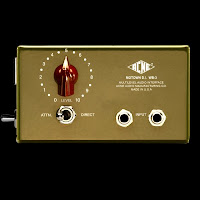There are a number of really interesting things that you hear when the tracks are isolated that you don't notice in the final mix.
1. The solo is doubled (and towards the end tripled), but each one begins to vary from around the 1:30 mark. Since the song was composed two years previously and played live over that time period, the solo was mostly composed before it was recorded, so there were several takes. When both sounded so good together, they were allowed to stay in the mix.
2. Until 3:48, the sound of the guitar is exactly the same (and even when it changes, it only sounds like a coil-tap of a pickup), as all the tracks were played by the late Alan Collins on a Gibson Explorer.
3. As is many times the case, the record label didn't want this song on the album, yet it went on to become the song that defined the band and has remained a rock anthem 40 years later.
4. Guitar World Magazine rates the solo as the 3rd greatest ever.
You can go here for a full analysis of the arrangement of the solo section.






